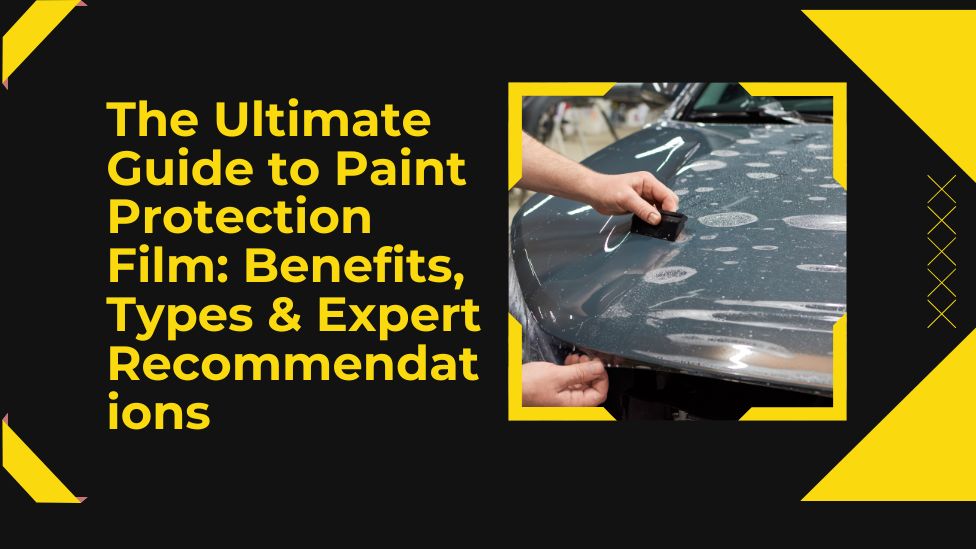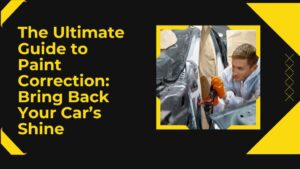Introduction
Your vehicle’s paint isn’t just about looks—it’s a major factor in preserving your car’s value and overall appearance. Unfortunately, daily driving exposes it to harsh conditions: rock chips, bird droppings, tree sap, road debris, and damaging UV rays.
Paint Protection Film (PPF) is one of the most effective ways to safeguard your vehicle’s finish and keep it looking flawless for years. In this guide, we’ll explore the benefits of PPF, review the different types available, and help you understand why it’s one of the top solutions for paint preservation.
What Is Paint Protection Film (PPF)?
Paint Protection Film is a transparent, ultra-durable urethane layer applied to your vehicle’s exterior surfaces. Originally developed for military applications, it’s now widely used by car owners, collectors, and enthusiasts who want long-term protection without altering the appearance of their vehicle.
Key Features of PPF:
- Self-healing technology (minor scratches vanish with heat)
- High resistance to chips, UV rays, stains, and contaminants
- Preserves factory paint clarity and depth
- Nearly invisible when properly installed
Why Choose Paint Protection Film?
PPF offers multiple layers of protection and long-term advantages:
1️⃣ Defense Against Physical Damage
- Shields paint from rock chips, gravel, and road debris
- Reduces swirl marks and light surface scratches
2️⃣ Protection from Environmental Hazards
- Blocks harmful UV rays that cause fading and oxidation
- Resists staining from bird droppings, bug residue, tree sap, and other contaminants
3️⃣ Preserves Resale Value
- A well-maintained finish makes your vehicle more attractive to future buyers
- Minimizes the need for costly paint repairs
4️⃣ Low Maintenance
- Dirt, water, and grime slide off easily
- Self-healing properties reduce the need for corrective polishing
5️⃣ Maintains Visual Appeal
- Keeps your factory paint looking fresh and glossy—or matte, depending on your preference
Types of Paint Protection Film
Not all PPF products are the same. Here’s a breakdown of common PPF variations:
- Clear Bra PPF
- Traditional clear film for invisible protection
- Popular for protecting high-impact areas like hoods, bumpers, and fenders
- Self-Healing PPF
- Features elastomeric properties that repair fine scratches with heat exposure
- Common choice for luxury and high-end vehicles
- Matte Finish PPF
- Provides a satin, non-glossy appearance
- Often used to achieve a unique look without sacrificing protection
- Ceramic-Coated PPF
- Combines PPF with ceramic technology for added hydrophobic performance
- Enhances water beading, dirt resistance, and surface slickness
Leading Paint Protection Film Brands
When choosing PPF, the brand matters for longevity and overall performance. Some of the most trusted options include:
- XPEL Ultimate Plus – Known for self-healing capabilities and excellent durability
- 3M Scotchgard Pro Series – High clarity, strong UV resistance, and anti-yellowing properties
- SunTek Ultra PPF – Offers a high-gloss finish with stain-resistant technology
- STEK DynoShield – Hydrophobic top coat and advanced UV protection
How Is Paint Protection Film Installed?
Proper installation is key to getting the most out of your PPF. Professional installers follow a detailed process:
1️⃣ Surface Preparation – Thorough cleaning and paint correction to ensure the surface is flawless
2️⃣ Precision Cutting – Using pre-cut templates or custom trimming to match your vehicle perfectly
3️⃣ Application – Applying the film with a slip solution for proper alignment
4️⃣ Curing – Allowing the film’s adhesive to settle over 24-48 hours for full bonding
While DIY kits exist, professional installation ensures better fitment, fewer imperfections, and maximum longevity.
Paint Protection Film vs Ceramic Coating
Both PPF and ceramic coatings offer excellent protection but serve slightly different purposes:
| Feature | PPF | Ceramic Coating |
| Impact Protection | ✔ Excellent | ✘ Limited |
| UV Resistance | ✔ Yes | ✔ Yes |
| Self-Healing | ✔ Some films | ✘ None |
| Finish Options | Glossy / Matte | Glossy only |
| Durability | Long-lasting | Moderate-long term |
Pro Tip: Many car owners choose both—PPF for high-impact areas and ceramic coating for the rest of the vehicle.
Frequently Asked Questions
Q: How long does Paint Protection Film last?
High-quality PPF can protect your vehicle for many years when properly cared for.
Q: Can PPF be safely removed?
Yes. Professional removal leaves your factory paint intact and damage-free.
Q: Is PPF compatible with matte finishes?
Absolutely. Specialized matte PPF preserves both protection and appearance.
Q: Is PPF worth it?
If you want to maintain your vehicle’s finish and avoid costly repairs, PPF is one of the best long-term investments for car care.
Final Thoughts: Is PPF Right for You?
If you want to keep your vehicle looking new for years, Paint Protection Film is a smart and highly effective solution. Whether you drive a daily commuter or a luxury sports car, PPF offers unparalleled protection against everyday threats while preserving your vehicle’s original beauty.
For the best results, always work with a skilled professional installer and select a trusted PPF brand. Your paint will stay protected, your car will retain its showroom appeal, and you’ll enjoy peace of mind every time you hit the road.



